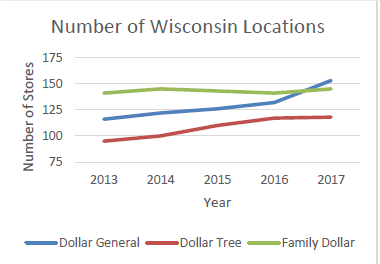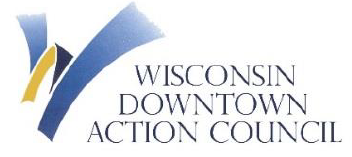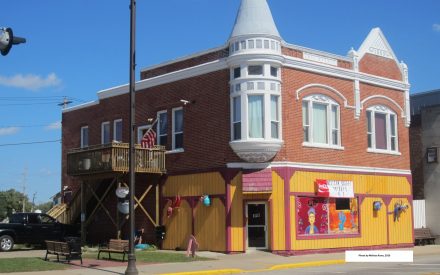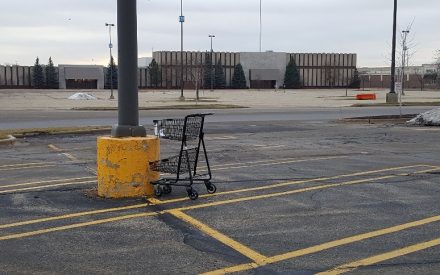(Image Source: Claudio Schwarz / Unsplash)
December 2018 — The three largest dollar store chains, Dollar General, Family Dollar, and Dollar Tree, have found ways to stay relevant in the changing, post-Great Recession. As the popularity of online shopping is increasing, some large retailers, like Sears and JC Penney, have closed many of their stores. Meanwhile, dollar store chains have increased sales and stores every year.
Size of These Companies
Dollar General and Dollar Tree each manage approximately 15,000 stores and have 2017 net sales of $23.5 billion and $22.2 billion, respectively. These sales rank Dollar General #123 and Dollar Tree #134 on the Fortune 500 list of 2018. In Wisconsin, Dollar General operates 165 stores and one distribution center in Janesville. Dollar Tree manages 118 of its stores in addition to 145 Family Dollar locations. In 2015, Dollar Tree outbid Dollar General to acquire the Family Dollar brand for $8.5 billion which nearly doubled its size. For comparison, Walmart and McDonald’s have 5,400 and 14,000 stores, combined.
Location of Stores
Dollar stores are widely popular for their discounted prices and selection of essential products, but much of their success has come from locating in places no other companies would consider. During times of urbanization, they have established themselves in struggling rural communities where no retailer has invested in many years.
Products Sold
Dollar General has based itself in low-income communities that are too small for their own grocery store or Walmart. It is not a surprise that discount stores are the favorites of low-income families. The average family that shops at Dollar General makes less than $50,000 annually and some rely on government assistance.
Dollar General tries to locate in “food deserts,” where grocery stores are not very accessible. Therefore, Dollar General can be closer to residents and provide many essentials such as food and household items more conveniently. Although Dollar General does not offer fresh produce and meat, it continues to increase food options to satisfy most of the communities’ needs.
Other product choices encapsulate rural communities as well. Many of these rural communities have military roots, so Dollar General sells numerous camouflage items and uses its own line of Coca-Cola that has labels like “Service Member” or “Military Spouse.” In addition, Dollar General started selling cigarettes in 2012, around the same time that many stores like CVS started discontinuing them.
How These Stores Contribute to the Community
While many companies like Walmart give to national and international causes, Dollar General and Dollar Tree support localized philanthropic efforts in the communities they already serve. Dollar General started the Dollar General Literacy Foundation which helps employees and customers within 20 miles of its stores with education and literacy. Dollar Tree assists military families, finances employee education, and provides grants to local community groups that provide essential services.
In a survey distributed by Morning Consult, the percent of US adults that believe Dollar Tree has a positive effect on their community was 62%, followed by 57% for Family Dollar, and 56% for Dollar General. This ranks all three dollar stores in the top 15 companies for community impact. It was also found that rural communities valued dollar stores more than suburban and urban communities.
Communities Should Avoid Costly Mistakes
Although many communities welcome dollar stores with open arms, some would rather do without them. One chain is accused of knowing what desperate communities will do to get a dollar store in their community. It is believed that they use leverage to sweeten their deal. In the past, the subject company has asked for huge utility incentives to locate in communities that are in desperate need of retail. Another dollar store chain has been accused of threatening local businesses that cannot compete with the deep discounts and scale of operation. It has been too competitive for some grocers to survive.
Expansion Plans
The following chart illustrates the number of dollar stores from the three brands in Wisconsin.
Dollar General is on track to open 900 stores in the US by the end of this year and Dollar Tree opened 276 stores in the first two fiscal quarters of 2018. Dollar stores know their target demographic well and will continue to provide reasonably priced products for them. A growing majority of sales are consumable goods, such as cleaning, food, and paper products. Dollar General has plans to improve product selection by having 450 stores that sell fresh produce. They plan to expand in existing food deserts.
Conclusions
Dollar stores have a growing impact on the local retail market, especially in rural communities that have had limited new retail investment for many years. This can be a welcome addition to many communities and increase local retail traffic. However, the increased competition can lead to the closing of local businesses that are not able to compete on price, especially those businesses that rely on the sale of consumable goods.
References
- Dollar General Corporation. 2013 – 2017 Annual Report, Nov. 2018, https://investor.dollargeneral.com/financial-information/annual-reports
- Dollar Tree, Inc., 2013 – 2017 Annual Reports, Nov. 2018, http://www.dollartreeinfo.com/investors/financial/annuals/
- Family Dollar Stores, Inc., 2013 – 2014 Annual Reports, Nov. 2018, http://www.annualreports.com/Company/family-dollar-stores-inc
- Hamstra, Mark. “Dollar General to Expand Fresh Produce to 450 Stores.” Supermarket News, March 15, 2018. https://www.supermarketnews.com/retail-financial/dollar-general-expand-fresh-produce-450-stores
- Jones, Charisse. “Dollar Stores Buck Trend, Rake in the Cash.” USA Today, June 21, 2017
- McGreal, Chris. “Where even Walmart won’t go: how Dollar General took over rural America.” The Guardian, August 13, 2018 https://www.theguardian.com/business/2018/aug/13/dollar-general-walmart-buhler-haven-kansas
- Morris, Frank. “How Dollar General Is Transforming Rural America.” NPR, December 11, 2017, https://www.npr.org/2017/12/11/569815331/loving-and-hating-dollar-general-in-rural-america
- Nassauer, Sarah. “How Dollar General Became Rural America’s Store of Choice.” Wall Street Journal, December 5, 2017
- “One Buck at a Time.” The Economist. January 27, 2018
- Piacenza, Joanna. “The Surprising Impact of Your Neighborhood Dollar Store.” Morning Consult. November 20, 2017, https://morningconsult.com/2017/11/20/surprising-impact-neighborhood-dollar-store/


















 Rural Pharmacies an Overlooked Piece of the Rural Health Care System
Rural Pharmacies an Overlooked Piece of the Rural Health Care System The Economics of Downtown Revitalization: Putting Some “Oomph” Behind the Numbers
The Economics of Downtown Revitalization: Putting Some “Oomph” Behind the Numbers The Hotel Industry: Recovery and Future Development in Our Communities
The Hotel Industry: Recovery and Future Development in Our Communities Focus Group Analysis Tips
Focus Group Analysis Tips


